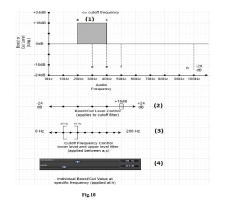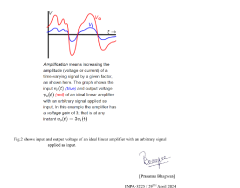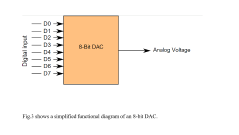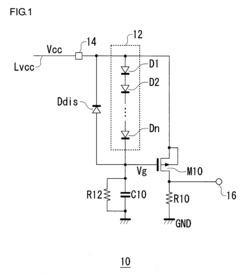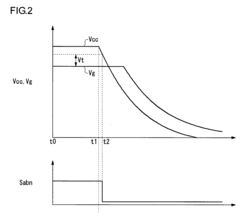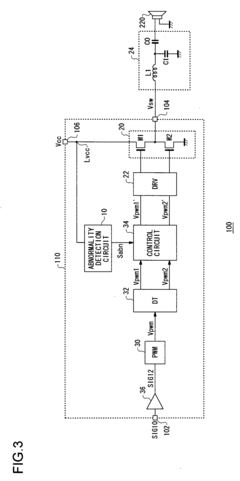Exploring LDAC Use in Professional Audio Equipment
JUL 4, 20258 MIN READ
Generate Your Research Report Instantly with AI Agent
Patsnap Eureka helps you evaluate technical feasibility & market potential.
LDAC Technology Evolution
LDAC, developed by Sony in 2015, represents a significant milestone in the evolution of Bluetooth audio codecs. This high-resolution audio codec was designed to address the limitations of earlier Bluetooth audio transmission technologies, particularly in terms of audio quality and bandwidth efficiency.
The evolution of LDAC technology can be traced through several key stages. Initially, LDAC was introduced as a proprietary codec exclusive to Sony devices, offering a maximum bitrate of 990 kbps. This was a substantial improvement over the standard SBC codec, which typically operated at 328 kbps.
In 2017, Sony made a strategic decision to open up LDAC to other manufacturers by incorporating it into the Android Open Source Project (AOSP). This move significantly expanded the potential user base and accelerated LDAC's adoption across the industry. It also marked the beginning of LDAC's integration into a wider range of devices beyond Sony's ecosystem.
The next phase of LDAC's evolution focused on optimizing its performance and compatibility. Sony introduced adaptive bitrate technology, allowing LDAC to dynamically adjust its bitrate based on connection quality and device capabilities. This feature enhanced LDAC's stability and usability in real-world conditions, where wireless interference and varying signal strengths are common challenges.
In recent years, LDAC has seen further refinements in its encoding and decoding algorithms. These improvements have resulted in lower latency and better energy efficiency, addressing two critical factors for professional audio applications. The codec now supports bitrates of 330 kbps, 660 kbps, and 990 kbps, with the ability to transmit audio at up to 32-bit/96 kHz resolution.
The integration of LDAC into professional audio equipment marks a new chapter in its evolution. As the demand for high-quality wireless audio in professional settings grows, LDAC is being adapted to meet the stringent requirements of studio-grade sound reproduction. This includes enhancements in signal processing, error correction, and synchronization to ensure reliable performance in live and recording environments.
Looking ahead, the evolution of LDAC is likely to continue in several directions. Efforts are being made to further reduce latency, crucial for real-time audio applications in professional settings. Additionally, work is underway to improve LDAC's efficiency at lower bitrates, potentially expanding its use in battery-constrained devices without compromising audio quality.
The evolution of LDAC technology can be traced through several key stages. Initially, LDAC was introduced as a proprietary codec exclusive to Sony devices, offering a maximum bitrate of 990 kbps. This was a substantial improvement over the standard SBC codec, which typically operated at 328 kbps.
In 2017, Sony made a strategic decision to open up LDAC to other manufacturers by incorporating it into the Android Open Source Project (AOSP). This move significantly expanded the potential user base and accelerated LDAC's adoption across the industry. It also marked the beginning of LDAC's integration into a wider range of devices beyond Sony's ecosystem.
The next phase of LDAC's evolution focused on optimizing its performance and compatibility. Sony introduced adaptive bitrate technology, allowing LDAC to dynamically adjust its bitrate based on connection quality and device capabilities. This feature enhanced LDAC's stability and usability in real-world conditions, where wireless interference and varying signal strengths are common challenges.
In recent years, LDAC has seen further refinements in its encoding and decoding algorithms. These improvements have resulted in lower latency and better energy efficiency, addressing two critical factors for professional audio applications. The codec now supports bitrates of 330 kbps, 660 kbps, and 990 kbps, with the ability to transmit audio at up to 32-bit/96 kHz resolution.
The integration of LDAC into professional audio equipment marks a new chapter in its evolution. As the demand for high-quality wireless audio in professional settings grows, LDAC is being adapted to meet the stringent requirements of studio-grade sound reproduction. This includes enhancements in signal processing, error correction, and synchronization to ensure reliable performance in live and recording environments.
Looking ahead, the evolution of LDAC is likely to continue in several directions. Efforts are being made to further reduce latency, crucial for real-time audio applications in professional settings. Additionally, work is underway to improve LDAC's efficiency at lower bitrates, potentially expanding its use in battery-constrained devices without compromising audio quality.
Pro Audio Market Demand
The professional audio equipment market has been experiencing steady growth, driven by increasing demand for high-quality sound reproduction across various sectors. The global pro audio market size was valued at approximately $4.37 billion in 2020 and is projected to reach $5.55 billion by 2027, growing at a CAGR of 3.5% during the forecast period.
The adoption of LDAC technology in professional audio equipment is poised to address several key market demands. Firstly, there is a growing need for wireless audio solutions that can deliver studio-quality sound without compromising on latency or reliability. This is particularly crucial in live performance settings, recording studios, and broadcast environments where audio fidelity and real-time transmission are paramount.
Furthermore, the rise of remote collaboration in music production and live streaming has created a demand for high-resolution audio codecs that can maintain sound quality over long-distance transmissions. LDAC's ability to transmit audio at up to 990 kbps makes it an attractive option for professionals seeking to bridge the gap between wired and wireless audio quality.
The market is also witnessing a shift towards more compact and portable professional audio setups. This trend is driven by the increasing number of mobile recording sessions, on-location broadcasts, and the need for flexible audio solutions in various venues. LDAC's wireless capabilities align well with this demand for mobility without sacrificing audio quality.
In the post-production and mastering segments, there is a growing emphasis on high-resolution audio formats. As consumers become more discerning about audio quality, professional equipment that can handle and reproduce these high-resolution formats is becoming increasingly important. LDAC's support for up to 24-bit/96kHz audio resolution positions it as a viable technology for meeting these market demands.
The live sound reinforcement sector, which includes concerts, festivals, and corporate events, is another area where LDAC could find significant application. The technology's low latency and high-quality audio transmission capabilities could potentially revolutionize wireless monitor systems and front-of-house mixing consoles, offering greater flexibility and improved sound quality in live settings.
As the pro audio market continues to evolve, there is an increasing focus on interoperability and standardization. LDAC's potential integration into professional audio equipment could contribute to establishing new industry standards for wireless audio transmission, thereby driving further innovation and market growth in this sector.
The adoption of LDAC technology in professional audio equipment is poised to address several key market demands. Firstly, there is a growing need for wireless audio solutions that can deliver studio-quality sound without compromising on latency or reliability. This is particularly crucial in live performance settings, recording studios, and broadcast environments where audio fidelity and real-time transmission are paramount.
Furthermore, the rise of remote collaboration in music production and live streaming has created a demand for high-resolution audio codecs that can maintain sound quality over long-distance transmissions. LDAC's ability to transmit audio at up to 990 kbps makes it an attractive option for professionals seeking to bridge the gap between wired and wireless audio quality.
The market is also witnessing a shift towards more compact and portable professional audio setups. This trend is driven by the increasing number of mobile recording sessions, on-location broadcasts, and the need for flexible audio solutions in various venues. LDAC's wireless capabilities align well with this demand for mobility without sacrificing audio quality.
In the post-production and mastering segments, there is a growing emphasis on high-resolution audio formats. As consumers become more discerning about audio quality, professional equipment that can handle and reproduce these high-resolution formats is becoming increasingly important. LDAC's support for up to 24-bit/96kHz audio resolution positions it as a viable technology for meeting these market demands.
The live sound reinforcement sector, which includes concerts, festivals, and corporate events, is another area where LDAC could find significant application. The technology's low latency and high-quality audio transmission capabilities could potentially revolutionize wireless monitor systems and front-of-house mixing consoles, offering greater flexibility and improved sound quality in live settings.
As the pro audio market continues to evolve, there is an increasing focus on interoperability and standardization. LDAC's potential integration into professional audio equipment could contribute to establishing new industry standards for wireless audio transmission, thereby driving further innovation and market growth in this sector.
LDAC Challenges in Pro Audio
LDAC, developed by Sony, is a high-resolution audio codec designed for Bluetooth wireless transmission. While it has gained popularity in consumer audio devices, its application in professional audio equipment faces several challenges. One of the primary obstacles is the inherent latency associated with Bluetooth transmission, which can be problematic in live performance and studio recording scenarios where precise timing is crucial.
The codec's variable bitrate, ranging from 330 kbps to 990 kbps, presents another challenge for pro audio applications. While this adaptability is beneficial for maintaining connection stability in consumer devices, professional audio equipment often requires consistent, high-quality audio transmission. The variability in bitrate could potentially lead to fluctuations in audio quality during critical recording or playback situations.
Furthermore, the integration of LDAC into existing professional audio workflows and equipment poses significant hurdles. Many pro audio setups rely on established wired connections or proprietary wireless systems optimized for low latency and high reliability. Introducing LDAC would require substantial changes to hardware designs and signal processing chains, potentially disrupting well-established industry standards and practices.
Compatibility issues also arise when considering the diverse ecosystem of professional audio equipment. LDAC, being a proprietary technology, may not be readily supported by all manufacturers, leading to potential interoperability problems in multi-device setups common in professional environments.
The power consumption of LDAC-enabled devices is another concern for pro audio applications. Professional audio equipment often needs to operate for extended periods without interruption, and the additional power requirements of LDAC processing could impact the battery life and heat generation of portable devices.
Lastly, the audio quality preservation throughout the signal chain is paramount in professional audio. While LDAC offers high-resolution audio capabilities, the potential for signal degradation during encoding, transmission, and decoding processes needs to be thoroughly evaluated against the stringent standards of the pro audio industry. Ensuring that the LDAC codec can maintain the level of audio fidelity required for professional applications across various acoustic environments and recording scenarios remains a significant challenge.
The codec's variable bitrate, ranging from 330 kbps to 990 kbps, presents another challenge for pro audio applications. While this adaptability is beneficial for maintaining connection stability in consumer devices, professional audio equipment often requires consistent, high-quality audio transmission. The variability in bitrate could potentially lead to fluctuations in audio quality during critical recording or playback situations.
Furthermore, the integration of LDAC into existing professional audio workflows and equipment poses significant hurdles. Many pro audio setups rely on established wired connections or proprietary wireless systems optimized for low latency and high reliability. Introducing LDAC would require substantial changes to hardware designs and signal processing chains, potentially disrupting well-established industry standards and practices.
Compatibility issues also arise when considering the diverse ecosystem of professional audio equipment. LDAC, being a proprietary technology, may not be readily supported by all manufacturers, leading to potential interoperability problems in multi-device setups common in professional environments.
The power consumption of LDAC-enabled devices is another concern for pro audio applications. Professional audio equipment often needs to operate for extended periods without interruption, and the additional power requirements of LDAC processing could impact the battery life and heat generation of portable devices.
Lastly, the audio quality preservation throughout the signal chain is paramount in professional audio. While LDAC offers high-resolution audio capabilities, the potential for signal degradation during encoding, transmission, and decoding processes needs to be thoroughly evaluated against the stringent standards of the pro audio industry. Ensuring that the LDAC codec can maintain the level of audio fidelity required for professional applications across various acoustic environments and recording scenarios remains a significant challenge.
Current LDAC Implementations
01 LDAC codec implementation in audio devices
LDAC is a high-quality audio codec developed for Bluetooth audio transmission. It is implemented in various audio devices to provide high-resolution audio streaming. The codec allows for efficient compression and transmission of audio data, enabling better sound quality over Bluetooth connections.- Audio codec technology for wireless devices: LDAC is an advanced audio codec technology developed for high-quality wireless audio transmission. It enables the transmission of high-resolution audio content over Bluetooth connections, offering improved sound quality compared to standard Bluetooth codecs. LDAC supports higher bitrates and a wider frequency range, resulting in a more detailed and immersive audio experience for users of compatible devices.
- Integration with smart home systems: LDAC technology can be integrated into smart home systems, allowing for high-quality audio streaming throughout connected devices in a home network. This integration enables users to enjoy superior audio quality across various rooms and devices, enhancing the overall smart home experience. The technology can be incorporated into speakers, receivers, and other audio equipment within the smart home ecosystem.
- Application in mobile devices and wearables: LDAC technology is increasingly being implemented in mobile devices such as smartphones and tablets, as well as wearable devices like wireless earbuds and smartwatches. This allows for improved audio quality in portable devices, enhancing the user experience for music listening, video playback, and voice communications. The technology is particularly beneficial for users who prioritize high-fidelity audio in their mobile devices.
- Compatibility with automotive audio systems: LDAC technology can be integrated into automotive audio systems, providing enhanced audio quality for in-car entertainment. This application allows for high-resolution audio streaming from mobile devices to car stereo systems, improving the overall listening experience for drivers and passengers. The technology can be particularly beneficial for luxury vehicles and audiophile-focused car audio setups.
- Energy efficiency improvements: Ongoing developments in LDAC technology focus on improving energy efficiency while maintaining high audio quality. These advancements aim to reduce power consumption in devices utilizing LDAC, extending battery life for wireless audio devices and mobile phones. Energy-efficient implementations of LDAC can help address concerns about battery drain in high-quality audio streaming scenarios.
02 Integration of LDAC with wireless communication systems
LDAC technology is integrated into wireless communication systems to enhance audio transmission capabilities. This integration allows for improved audio quality in wireless devices, including smartphones, headphones, and speakers. The implementation often involves optimizing the codec for specific hardware configurations and network conditions.Expand Specific Solutions03 LDAC in automotive audio systems
LDAC codec is incorporated into automotive audio systems to provide high-quality audio streaming in vehicles. This application of LDAC technology enhances the in-car entertainment experience by enabling better audio transmission over Bluetooth connections between mobile devices and car audio systems.Expand Specific Solutions04 LDAC compatibility with other audio technologies
LDAC is designed to be compatible with various audio technologies and standards. This includes integration with different audio processing algorithms, support for multiple audio formats, and interoperability with other Bluetooth audio codecs. The compatibility ensures wider adoption and seamless integration across different audio ecosystems.Expand Specific Solutions05 Power efficiency improvements in LDAC implementation
Efforts are made to improve the power efficiency of LDAC codec implementation in audio devices. This involves optimizing the encoding and decoding processes to reduce power consumption while maintaining high audio quality. Such improvements are particularly important for battery-powered devices like wireless headphones and portable speakers.Expand Specific Solutions
Key LDAC Industry Players
The LDAC technology in professional audio equipment is in a mature development stage, with a growing market size driven by increasing demand for high-quality wireless audio solutions. The competitive landscape is characterized by established players like Cirrus Logic, Analog Devices, and Qualcomm, who are leveraging their expertise in signal processing and audio technologies. Companies such as Yamaha and Harman Becker are integrating LDAC into their professional audio products, while semiconductor manufacturers like Texas Instruments and STMicroelectronics are developing compatible chipsets. The market is seeing continuous innovation, with firms like Sony (LDAC's creator) and other major tech companies investing in improving codec performance and expanding its application in various audio devices.
Analog Devices, Inc.
Technical Solution: Analog Devices has been working on integrating LDAC support into their audio signal processing solutions for professional equipment. Their approach involves developing specialized DSP chips that can efficiently handle LDAC encoding and decoding while also performing other audio processing tasks. ADI's implementation focuses on minimizing power consumption and reducing latency, which are critical factors in professional audio applications. They've developed a scalable architecture that allows for LDAC support across a range of devices, from portable recorders to large-scale mixing consoles[7]. ADI's solution also includes advanced clock recovery and jitter reduction techniques to maintain the high fidelity promised by LDAC, even in challenging wireless environments[8].
Strengths: Expertise in signal processing, potential for wide-ranging integration in various audio equipment. Weaknesses: May require significant hardware upgrades for existing systems to fully utilize their LDAC implementation.
Yamaha Corp.
Technical Solution: Yamaha has been exploring LDAC integration in their professional audio equipment, particularly in their high-end digital mixing consoles and wireless audio systems. Their approach focuses on maintaining the highest possible audio quality in live sound and studio environments. Yamaha's implementation of LDAC includes custom DSP (Digital Signal Processing) algorithms that work in tandem with the codec to optimize sound quality for different types of audio content[5]. They've also developed a proprietary wireless protocol that can switch between LDAC and other codecs based on the audio source and network conditions, ensuring maximum compatibility and performance[6]. In their latest professional audio interfaces, Yamaha has integrated LDAC support with their own VCM (Virtual Circuitry Modeling) technology, aiming to reproduce the warmth of analog circuits in the digital domain while maintaining the high-resolution capabilities of LDAC.
Strengths: Strong reputation in professional audio, integration with existing pro audio workflows. Weaknesses: Potentially higher cost due to custom hardware and software development.
LDAC Core Technical Innovations
Audio processing device with multi-processor support and precision frequency cutoff filters for enhanced sound control
PatentPendingIN202441034425A
Innovation
- An advanced audio processing device with an audio amplifier processor capable of independent operation and configuration in series or parallel, integrated with a digital-analog converter, allowing precise manipulation of frequencies from 0 Hz to 200 Hz, and incorporating cutoff filters for precise control over specific frequency bands.
Abnormality detection circuit
PatentInactiveUS20080048732A1
Innovation
- An abnormality detection circuit utilizing a P-channel MOSFET with a capacitor and charging path to monitor power supply voltage, outputting a signal that changes state when the voltage drops, allowing for immediate detection and prevention of noise by muting the amplifier.
Audio Codec Standardization
Audio codec standardization plays a crucial role in ensuring interoperability and consistent performance across various professional audio equipment. In the context of LDAC (Low Latency Audio Codec) implementation, standardization efforts have been ongoing to establish a unified framework for high-quality wireless audio transmission.
The standardization process for LDAC in professional audio equipment involves collaboration between industry leaders, regulatory bodies, and technology developers. The primary goal is to create a set of specifications that define the codec's performance parameters, compression algorithms, and implementation guidelines.
One of the key aspects of LDAC standardization is the establishment of minimum performance requirements. These include specifications for bit rate, frequency response, latency, and signal-to-noise ratio. By setting these benchmarks, manufacturers can ensure that LDAC-enabled devices meet a consistent level of audio quality across different brands and models.
Interoperability testing is another critical component of the standardization process. This involves developing standardized test procedures and certification programs to verify that LDAC-enabled devices from different manufacturers can communicate effectively and maintain optimal audio quality.
The standardization efforts also address the integration of LDAC with existing audio protocols and interfaces commonly used in professional audio equipment. This includes compatibility with digital audio interfaces like AES/EBU, MADI, and Dante, as well as ensuring seamless operation within professional audio workflows.
As part of the standardization process, documentation and reference implementations are being developed to assist manufacturers in implementing LDAC in their products. These resources provide detailed technical specifications, coding guidelines, and best practices for optimizing LDAC performance in professional audio applications.
The standardization of LDAC for professional audio equipment also considers future scalability and adaptability. This involves provisions for updates to the codec to accommodate advancements in audio technology and changing industry requirements.
Regulatory compliance is an essential aspect of the standardization process. Efforts are being made to ensure that LDAC implementation in professional audio equipment adheres to relevant international standards and regulations, including those related to wireless communication and electromagnetic compatibility.
By establishing a standardized framework for LDAC in professional audio equipment, the industry aims to foster innovation, improve product compatibility, and ultimately enhance the overall quality of wireless audio transmission in professional settings.
The standardization process for LDAC in professional audio equipment involves collaboration between industry leaders, regulatory bodies, and technology developers. The primary goal is to create a set of specifications that define the codec's performance parameters, compression algorithms, and implementation guidelines.
One of the key aspects of LDAC standardization is the establishment of minimum performance requirements. These include specifications for bit rate, frequency response, latency, and signal-to-noise ratio. By setting these benchmarks, manufacturers can ensure that LDAC-enabled devices meet a consistent level of audio quality across different brands and models.
Interoperability testing is another critical component of the standardization process. This involves developing standardized test procedures and certification programs to verify that LDAC-enabled devices from different manufacturers can communicate effectively and maintain optimal audio quality.
The standardization efforts also address the integration of LDAC with existing audio protocols and interfaces commonly used in professional audio equipment. This includes compatibility with digital audio interfaces like AES/EBU, MADI, and Dante, as well as ensuring seamless operation within professional audio workflows.
As part of the standardization process, documentation and reference implementations are being developed to assist manufacturers in implementing LDAC in their products. These resources provide detailed technical specifications, coding guidelines, and best practices for optimizing LDAC performance in professional audio applications.
The standardization of LDAC for professional audio equipment also considers future scalability and adaptability. This involves provisions for updates to the codec to accommodate advancements in audio technology and changing industry requirements.
Regulatory compliance is an essential aspect of the standardization process. Efforts are being made to ensure that LDAC implementation in professional audio equipment adheres to relevant international standards and regulations, including those related to wireless communication and electromagnetic compatibility.
By establishing a standardized framework for LDAC in professional audio equipment, the industry aims to foster innovation, improve product compatibility, and ultimately enhance the overall quality of wireless audio transmission in professional settings.
LDAC Licensing and Adoption
LDAC licensing and adoption have been critical factors in the technology's widespread implementation across the audio industry. Sony, the developer of LDAC, has taken a strategic approach to licensing, balancing the need for market penetration with maintaining control over the technology's quality and implementation.
Initially, Sony limited LDAC licensing to select partners, primarily focusing on high-end audio equipment manufacturers. This approach allowed Sony to maintain tight control over the technology's implementation and ensure that LDAC was associated with premium audio experiences. As the technology matured and gained recognition, Sony gradually expanded its licensing program.
A significant milestone in LDAC adoption came when Google incorporated LDAC into the Android operating system, starting with Android 8.0 (Oreo) in 2017. This move dramatically increased the potential user base for LDAC-enabled devices, as it allowed any Android smartphone manufacturer to implement the technology without needing a separate license from Sony.
For professional audio equipment manufacturers, obtaining an LDAC license typically involves a formal agreement with Sony. This process often includes technical specifications, implementation guidelines, and quality control measures to ensure that the LDAC codec is properly integrated into the equipment and performs to Sony's standards.
The adoption of LDAC in professional audio equipment has been steadily increasing, with many high-end audio brands incorporating the technology into their product lines. This includes wireless headphones, digital audio players, and professional-grade Bluetooth transmitters and receivers. The high-quality audio transmission capabilities of LDAC make it particularly attractive for studio monitoring, live sound applications, and audiophile-grade consumer products.
However, the adoption of LDAC in professional audio equipment has not been without challenges. Some manufacturers have expressed concerns about the licensing costs and the technical complexities of implementing the codec. Additionally, the proprietary nature of LDAC has led some companies to explore open-source alternatives or develop their own high-resolution wireless audio solutions.
Despite these challenges, the overall trend shows a growing acceptance of LDAC in the professional audio sector. As more manufacturers adopt the technology and end-users become familiar with its benefits, LDAC is increasingly becoming a standard feature in high-end audio equipment. This trend is likely to continue as the demand for high-quality wireless audio transmission in professional settings continues to grow.
Initially, Sony limited LDAC licensing to select partners, primarily focusing on high-end audio equipment manufacturers. This approach allowed Sony to maintain tight control over the technology's implementation and ensure that LDAC was associated with premium audio experiences. As the technology matured and gained recognition, Sony gradually expanded its licensing program.
A significant milestone in LDAC adoption came when Google incorporated LDAC into the Android operating system, starting with Android 8.0 (Oreo) in 2017. This move dramatically increased the potential user base for LDAC-enabled devices, as it allowed any Android smartphone manufacturer to implement the technology without needing a separate license from Sony.
For professional audio equipment manufacturers, obtaining an LDAC license typically involves a formal agreement with Sony. This process often includes technical specifications, implementation guidelines, and quality control measures to ensure that the LDAC codec is properly integrated into the equipment and performs to Sony's standards.
The adoption of LDAC in professional audio equipment has been steadily increasing, with many high-end audio brands incorporating the technology into their product lines. This includes wireless headphones, digital audio players, and professional-grade Bluetooth transmitters and receivers. The high-quality audio transmission capabilities of LDAC make it particularly attractive for studio monitoring, live sound applications, and audiophile-grade consumer products.
However, the adoption of LDAC in professional audio equipment has not been without challenges. Some manufacturers have expressed concerns about the licensing costs and the technical complexities of implementing the codec. Additionally, the proprietary nature of LDAC has led some companies to explore open-source alternatives or develop their own high-resolution wireless audio solutions.
Despite these challenges, the overall trend shows a growing acceptance of LDAC in the professional audio sector. As more manufacturers adopt the technology and end-users become familiar with its benefits, LDAC is increasingly becoming a standard feature in high-end audio equipment. This trend is likely to continue as the demand for high-quality wireless audio transmission in professional settings continues to grow.
Unlock deeper insights with Patsnap Eureka Quick Research — get a full tech report to explore trends and direct your research. Try now!
Generate Your Research Report Instantly with AI Agent
Supercharge your innovation with Patsnap Eureka AI Agent Platform!

